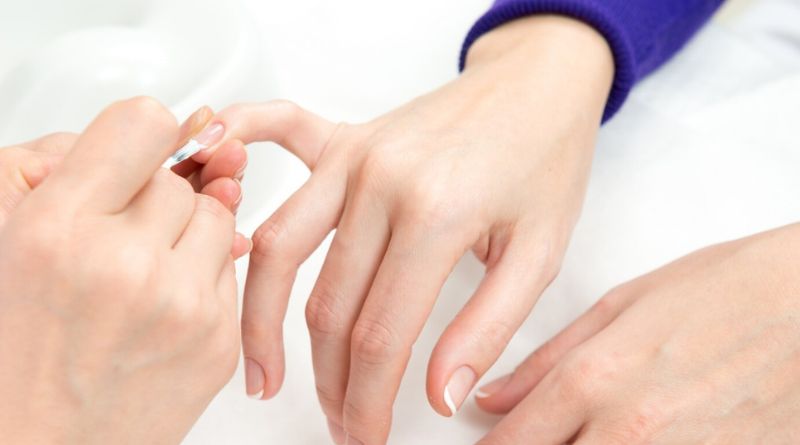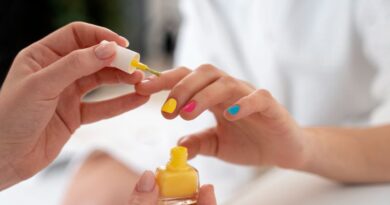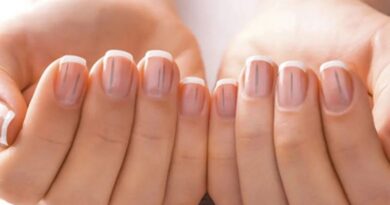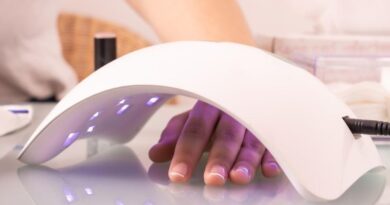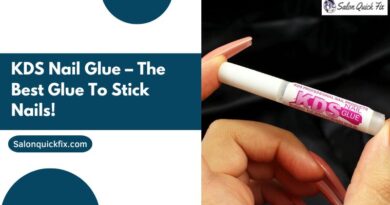How to treat an allergic reaction to gel nail polish – Nail art is one of the essential parts of fashion today & women love to have beautiful long & stylish nails & for that; they get various nail treatments. It includes getting manicures & artificial nails to achieve beautiful nails. Gel nails are prevailing nowadays & they stay for a long time & also give the best nail look. But many women have experienced an allergy to getting gel nails & nail polishes. What is that problem & how to treat an allergic reaction to gel nail polish?
The allergy is due to a chemical present in gel nails & nail polishes named methacrylate, which causes itchy fingers & even itchiness on any part of the body. Let’s get to know about the allergy in detail & the ways to treat it.
Can nail polish cause allergic reaction?
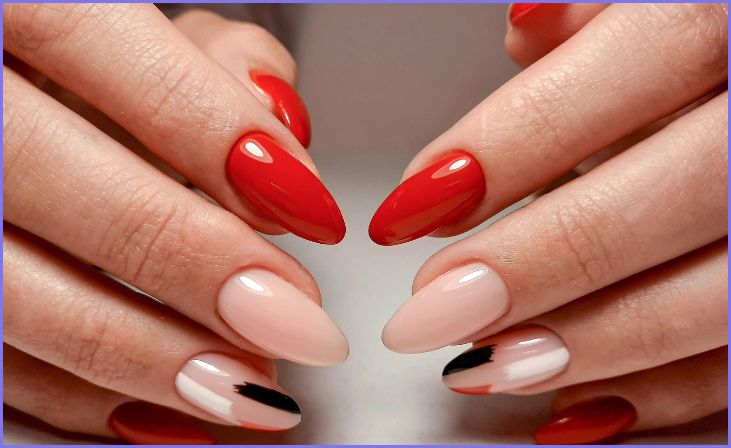
Yes, nail polish, especially gel nail polishes, can start an allergic reaction due to a chemical present in it. The allergic reaction called Dermatitis happens & causes itchiness on the eyes, face, neck, or any body part that comes in contact with the nails.
Inexperienced nail technicians and homeowners alike are prone to this problem when applying gels and polishes to their own nails. Methacrylates are found in gel, acrylic, and gel polish nails.
In many cases, gels and polishes are put on at home or by untrained people. This causes an allergic reaction.
If an untrained professional uses any wrong kind of nail polish or infested nail paint, then there are also chances of Allergic reaction.
Quick Link: la colors gel nail polish
What causes an allergic reaction to gel nails?
Methacrylates are found in gel, acrylic, and gel polish nails. This chemical can result in itching anywhere on the body & not just the fingertips. A study says that at least 2.4% of people could be affected. Results were based on allergy tests done on 4,931 people who went to 13 dermatology units in the UK and Ireland in 2017.
Most of the people who had allergies to nail enhancements, nail or eyelash glue, or who worked as nail beauticians had them because they used them.
Another reason for allergic reaction to gel nails is the preservative tosylamide formaldehyde resin. The preservative tosylamide formaldehyde resin is the chemical that causes the most allergic reactions to nail varnish or polish. It can be found in high amounts in base coats to help them stick to the nail surface.
Allergy to wet nail enamel is the most prevalent cause; however, dry nail enamel may also cause it. Nail enamel dermatitis may also be induced by an allergy to the solvent butyl acetate or by colorants discoloring the nail surface.
Can gel nails cause a rash on other parts of my body?
It’s possible that the gel chemicals on your hands might induce any of the responses listed above if they come into touch with any part of your body. However, the most prevalent complaints are regarding the face, neck, and genitals, areas that are often touched during daily activities.
Having a rash or other symptoms doesn’t tell you where the problem is coming from, so you may feel terrified or frustrated. A lot of people definitely wouldn’t relate nail gel to that area of the body.
Let your doctor know if you have a skin rash if you go to the salon to receive gels or any other sort of nail treatment.
How to treat an allergic reaction to gel nail polish?
Remove the Gel Polish
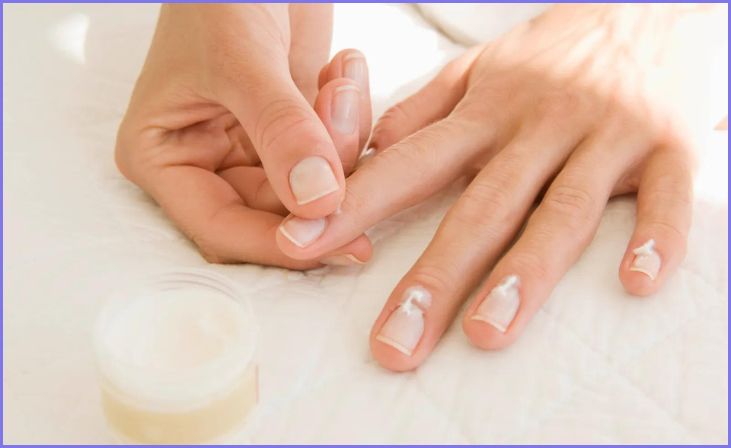
To treat an allergic reaction to gel nail polish, immediately remove the polish using an acetone-based remover. Wash the affected area with mild soap and water, apply a cold compress to reduce swelling, and avoid scratching. Consider using an over-the-counter hydrocortisone cream and antihistamines for relief.
Keep the skin moisturized with a hypoallergenic product. If the reaction is severe or persists, seek medical attention. Identify the allergen by noting the product’s ingredients, and perform patch tests before using new nail products.
If experiencing severe symptoms like difficulty breathing, seek emergency medical help. Consult with a healthcare professional for personalized advice.
Cleanse the Area
Cleanse the affected area by washing with mild soap and water. Gently scrub to remove any gel polish residue. Pat the area dry with a clean, soft towel. Avoid harsh scrubbing or abrasive materials to prevent further irritation.
If possible, use a fragrance-free and hypoallergenic soap to minimize the risk of additional reactions. After cleansing, consider applying a cold compress to reduce swelling. If symptoms persist or worsen, seek medical advice promptly.
Cold Compress
For a gel nail polish allergic reaction, apply a cold compress to the affected area. Wrap ice or a cold pack in a thin cloth and gently press it against the skin. The cold temperature can help alleviate swelling and soothe irritation.
Avoid direct contact with the skin to prevent frostbite or further irritation. Apply the cold compress in intervals, for about 15 minutes at a time. If the reaction persists or worsens, seek medical attention for proper evaluation and treatment.
Avoid Scratching
Refrain from scratching the affected area to prevent worsening the gel nail polish allergic reaction. Scratching can exacerbate irritation, increase inflammation, and potentially lead to infection. Instead, resist the urge to scratch and focus on relieving discomfort through other means. Applying a cold compress, using over-the-counter anti-itch creams, or taking oral antihistamines may help alleviate itching.
Keep the nails short to minimize accidental scratching. If the urge to scratch is overwhelming, consider covering the affected area with a clean, cool compress or wearing breathable fabric to act as a barrier, reducing the risk of further irritation. If symptoms persist, consult a healthcare professional for guidance.
Topical Steroid Cream
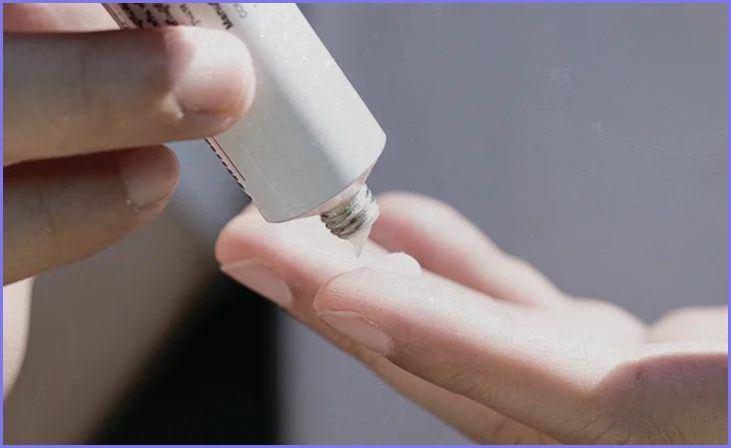
To address itching and redness from a gel nail polish allergic reaction, consider applying an over-the-counter hydrocortisone cream. Follow the product’s instructions and use it sparingly. Hydrocortisone, a mild topical steroid, can help reduce inflammation and provide relief.
Cleanse the affected area before application, and avoid using the cream on broken skin or open wounds. If the symptoms persist or worsen, consult a healthcare professional for further guidance.
Limit the use of topical steroids to the recommended duration, as prolonged or excessive use may have side effects. If there are concerns or uncertainties, seek medical advice for personalized care.
Antihistamines
To alleviate itching and redness caused by a gel nail polish allergic reaction, consider taking over-the-counter antihistamines, such as diphenhydramine (Benadryl). Follow the recommended dosage on the product label.
Antihistamines can help counteract the body’s histamine response, reducing allergic symptoms. Be cautious, as these medications may cause drowsiness, and it’s essential to avoid activities requiring alertness. If the reaction persists or worsens, seek medical advice.
Inform healthcare providers of any existing medical conditions or medications to ensure compatibility. Avoid self-medicating for an extended period; consult with a healthcare professional for personalized recommendations and monitoring.
Keep the Area Moisturized
After an allergic reaction to gel nail polish, keep the affected area moisturized to promote healing. Apply a hypoallergenic and fragrance-free moisturizer regularly to prevent dryness and soothe the skin.
Opt for products with minimal additives to reduce the risk of further irritation. Gently massage the moisturizer into the skin, focusing on the affected area. Avoid harsh or scented lotions that may exacerbate the reaction.
If the skin is broken or irritated, choose a healing ointment or cream recommended by a healthcare professional. Consistent moisturization can help restore the skin barrier and alleviate discomfort. If symptoms persist, consult with a healthcare provider for personalized advice.
Consult a Healthcare Professional
If an allergic reaction to gel nail polish persists or worsens, seek prompt medical attention. A healthcare professional can provide an accurate diagnosis and recommend appropriate treatment based on the severity of the reaction.
Inform them of any pre-existing medical conditions, allergies, or medications to ensure a comprehensive assessment. Do not hesitate to consult a healthcare professional for guidance on managing symptoms, especially if there are signs of infection, difficulty breathing, or swelling.
Your well-being is paramount, and a healthcare professional can offer personalized advice tailored to your specific situation.
Identify the Allergen
Identify the allergen by reviewing the ingredients in the gel nail polish that triggered the reaction. Take note of specific components or chemicals and share this information with a healthcare professional.
Patch testing with small amounts of the product on a discreet area before full application can help pinpoint the allergen. If uncertain about specific ingredients, consult with a dermatologist or allergist for allergy testing.
This information is valuable for avoiding similar reactions in the future. Consider opting for hypoallergenic nail products or those labeled “5-free” or “7-free” to reduce the risk of exposure to common allergens found in nail polishes.
Patch Test
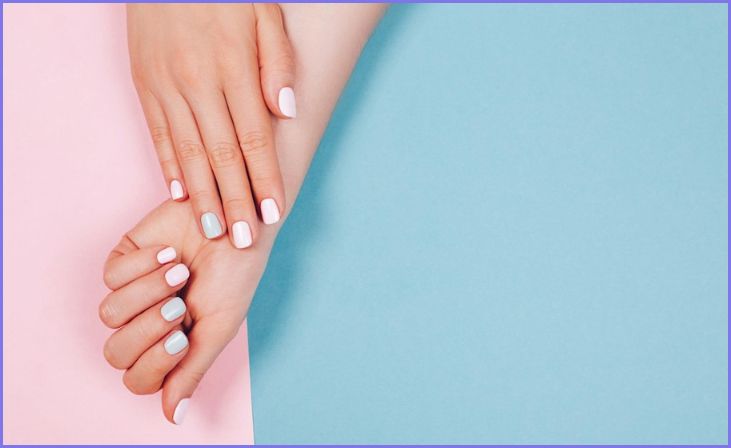
Before using a new gel nail polish, perform a patch test to avoid potential allergic reactions. Apply a small amount of the product on a discreet area of the skin, such as the forearm. Observe the area for at least 24 hours for any signs of redness, swelling, itching, or irritation.
If no adverse reactions occur, the product is likely safe for use. However, if any negative symptoms arise, refrain from using the gel polish on a larger scale. Consult with a healthcare professional or dermatologist for further guidance and allergy testing if needed, especially if previous reactions have occurred.
How can I avoid nail cosmetics allergies?
If you know that you are allergic to gel nails, then you should avoid something & prevent the allergy from happening again.
The best way to avoid products that have the allergen you are allergic to is to not use them at all.
When looking for hypoallergenic nail polish, you might want to look for polishes that use polyester resin or cellulose acetate butyrate instead. However, it is still possible to be sensitive. A varnish prepared with tosylamide formaldehyde resin, on the other hand, is far more long-lasting and resistant to scratching than any alternative.
If you are a Nail Technician-
Maintaining a clean workspace, sterilizing all equipment, and properly conducting the nail care procedure are some of the responsibilities of a nail care technician. As a result, allergic reactions to gel products will not be exacerbated.
Salon disinfecting treatments, such as micro-exfoliating hand polish and hand serum, are also available to prevent you from allergic reactions.
What can I use if I’m allergic to gel nails?
If you are allergic to gel nail polish, then still you can choose some other alternatives. But those alternatives should contain polyester resin or cellulose acetate butyrate. You can use any of these alternatives:
- PRIMA Gel Polish
- Evolution Soak-Off Sculpting Gel
- Hypnos Soak-Off Colour Gel
- One 1-Phase Sculpting Gel
- Polytek Polymer Sculpting Gel
- Ovation Polymer Sculpting Gel
- Ultimate 3-Phase Sculpting Gel
- Opium 3-Phase Sculpting Gel
- Inspire Liner Painting Gel
Bottom Line
This was all about allergic reaction to gel nail polish & how you can treat it & prevent it. We hope you find all the required information you were seeking. Please let us know your thoughts & suggestions in the comments below!
Thank you for reading!
FAQs
Allergic reactions tend to be more severe and persistent than regular irritation. If symptoms like redness, swelling, or itching persist or worsen, it’s more likely to be an allergic reaction. Consult a healthcare professional for a proper diagnosis.
Immediately remove the gel nail polish and wash your hands thoroughly. Applying a mild, fragrance-free moisturizer may help soothe the skin. If symptoms persist or worsen, seek medical attention.
Over-the-counter antihistamines may help alleviate some symptoms, such as itching. However, it’s important to consult with a healthcare professional before using any medication, especially if you’re unsure about the cause of the reaction.

